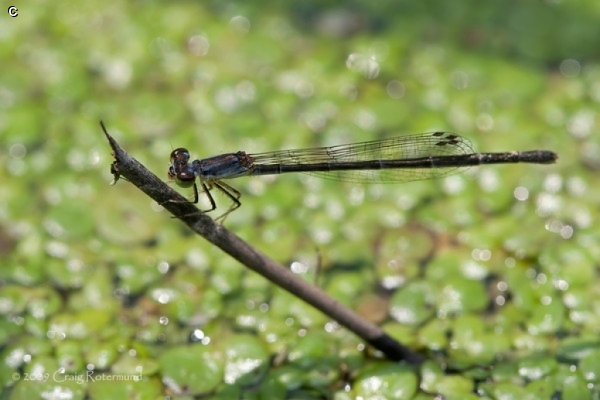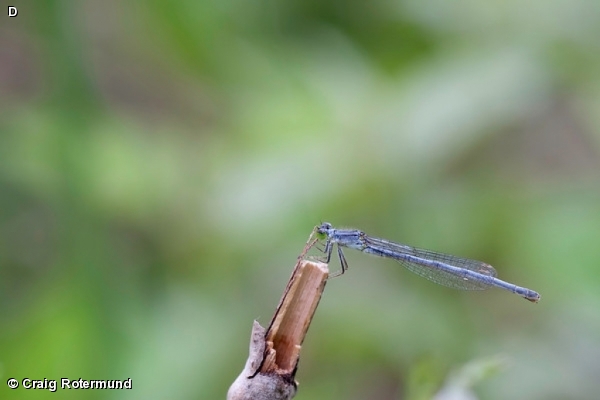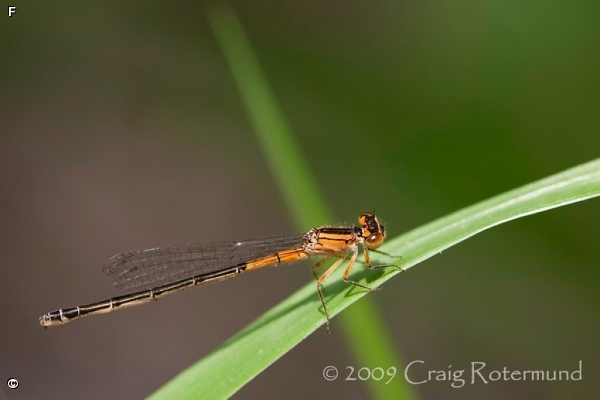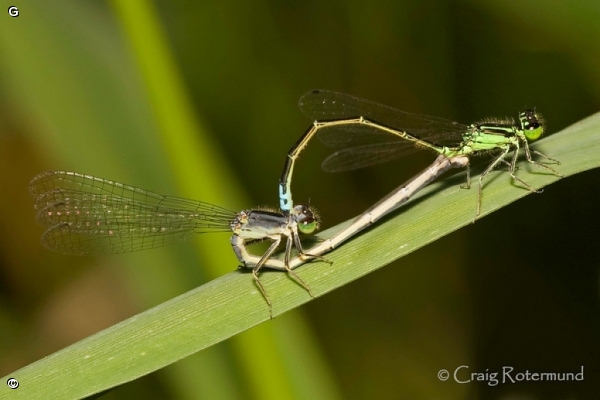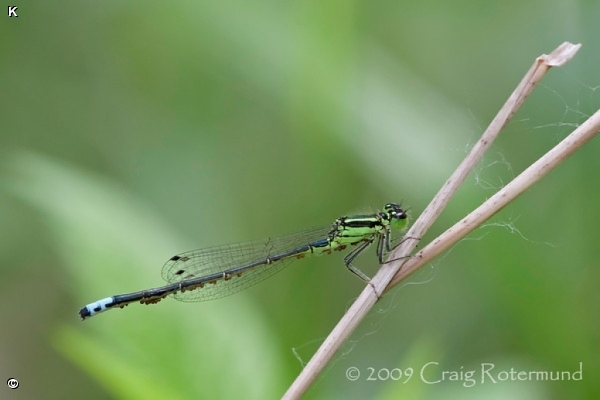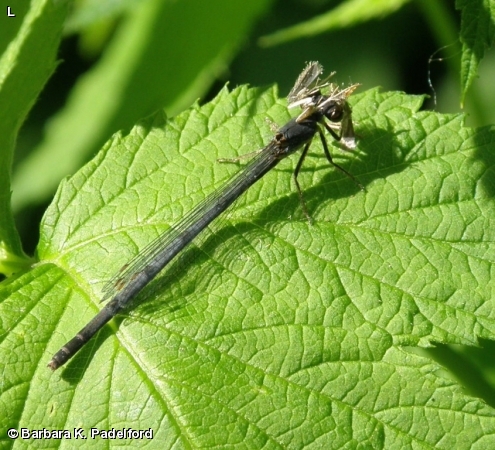
This small damselfly is approximately 1 1/4 inches in length. The face of the male is emerald green. The eyes are black above, and green below. The small postocular spots on the back of the eyes are blue (photo F). The thorax is mostly emerald green with a black mid-stripe on top and a side stripe. The abdomen is black except for very narrow pale rings, and segments 8 and 9 which are blue. The sides of 8 and 9 have squarish black spots. The wings are clear with black stigmas near the tips. Most immature females are a bright orange on the eyes, thorax , legs and segments 1 – 3 of the abdomen. Less commonly, some immature females can look like males except the thorax is bluer. The adult female is gray pruinose except for the face and eyes which are green. Females take nearly a week to achieve the mature color.
This forktail is probably the most common damselfly. It’s one of the first to appear in the spring and one of the last flying in the fall. They can be seen along the stream and the wetlands pond in Fontenelle Forest when conditions are warm from early April through mid-October.
Forktails perch horizontally on low vegetation and branches or cling to the sides of vertical plant stems. They are rarely seen over open water. Most females mate only once and use that sperm to fertilize all the eggs they lay. Females oviposit alone on floating or emergent vegetation. As tiny as this damsel is, it is a fierce predator and has been seen in Fontenelle Forest devouring a still smaller damselfly, the Fragile Forktail.
Disclaimer: The content of NatureSearch is provided by dedicated volunteer Naturalists of Fontenelle Forest who strive to provide the most accurate information available. Contributors of the images retain their copyrights. The point of contact for this page is: Babs Padelford.


